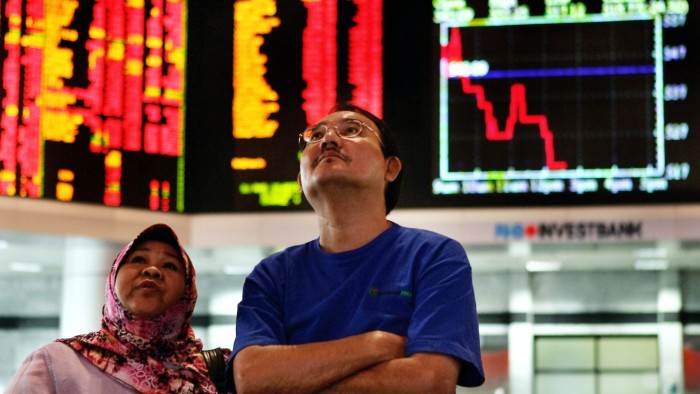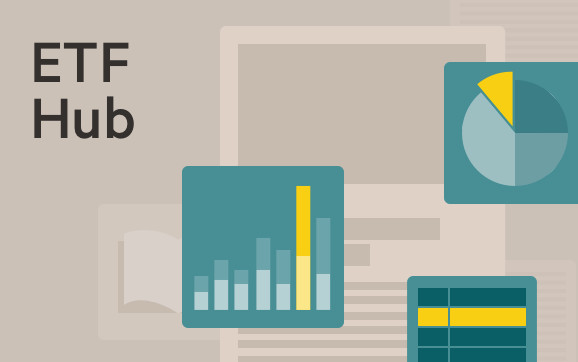Malaysia’s first fund investing in an inverse ETF faces hurdles

Simply sign up to the Exchange traded funds myFT Digest -- delivered directly to your inbox.
Latest news on ETFs
Visit our ETF Hub to find out more and to explore our in-depth data and comparison tools
Maybank Asset Management is gearing up to launch Malaysia’s first mutual fund that invests in an inverse exchange traded fund amid persistent gloomy market outlooks that have kept investors largely on the sidelines since last year.
But the firm, which will target sophisticated investors due to regulation on the sale of complex products, is wondering about how to promote the new strategy, given the potential for mixed signals to investors — essentially that the manager is forecasting even choppier markets.
However, Ahmed Muzni Mohamed, Malaysia chief executive at Maybank AM, said that during last year’s market turmoil, the group realised that “when the market was going down, we had nothing to offer clients”.
Fund flows and assets dropped precipitously across the region last year as investors fled mutual funds amid increased geopolitical tensions, rising rates, inflation and damped post-coronavirus pandemic economic outlooks.

This article was previously published by Ignites Asia, a title owned by the FT Group.
Malaysia’s domestic funds industry assets fell from RM951.05bn ($204.49bn) in assets under management at the end of 2021 to RM906.46bn at the end of December 2022, according to data from Malaysia’s Securities Commission.
With investors still hesitant, Maybank AM began drawing up plans to launch a fund that invests in an S&P 500-focused inverse ETF — which it believes is the first such product in Malaysia — to help investors capitalise on down markets and boost inflows for the firm.
An inverse ETF is designed to allow investors to make a return that is the opposite of the product’s underlying index using financial derivatives.
By putting an inverse ETF into the familiar wrapper of a mutual fund, the firm hopes to appeal to its investor base with a structure they are comfortable with.
“At least when times are bad, there’s something that investors can go to instead of staying out of the market,” Mohamed argues.
But the launch of this fund, which it hopes to bring to market in the next month or two, has also left Maybank AM with a dilemma on the right promotional strategy to employ.
With Malaysian investors already feeling stung by falling markets last year and hesitant to put capital back into mutual funds, the last thing the firm needs is clients thinking that Maybank AM is “predicting that the market is going to go south”, Mohamed said.
“But in reality, if you don’t have it when the market goes south, you’ll be knocking your head and saying I wish I had this to offer to the client.”
Timing of the inverse fund strategy launch is also likely to be a difficult consideration for Maybank AM. Despite gloomy predictions about the US stock market earlier in the year, the S&P 500 was up more than 18 per cent year to date on July 14.
Another challenge is low awareness and investor appetite for such products. There were six leveraged and inverse ETFs listed on the Malaysian bourse until four were shut down in May. The two remaining ETF strategies track the local stock market.
This is in contrast to other regional markets such as Japan, South Korea, Taiwan and Hong Kong, where total assets in such products at the end of 2022 amounted to about $20bn, compared with just $800mn for the rest of Asia Pacific, according to Broadridge Global Market Intelligence data.
ETF adoption in general has been slow in Malaysia, with market participants blaming the lack of distribution channels and misconceptions from retail investors around the kind of returns they can get from ETFs.
In May this year, Bursa Malaysia rolled out a promotion, giving free trips to Bali, Tokyo and local holiday destination Langkawi to eligible retail investors who invest in at least one ETF.
Latest news on ETFs

Visit the ETF Hub to find out more and to explore our in-depth data and comparison tools helping you to understand everything from performance to ESG ratings
Mohamed argued that most Malaysian investors are still not sophisticated enough to feel comfortable investing directly into an ETF, however.
“Most investors that are our clients in mutual funds don’t even have a brokerage account to trade directly in ETFs, nor do they want to create a [central depository system] account to do that,” he said.
Packaging inverse ETFs into a product format that Malaysian investors are more familiar with could widen its appeal, said Justin Lee, Singapore-based analyst at Cerulli Associates, but investors need to be aware that the underlying risks of investing in an inverse product remain the same, he warned.
This includes the risk of compounding returns, where the return of an inverse ETF over a period of longer than a day can vary greatly from its stated single-day investment objective.
*Ignites Asia is a news service published by FT Specialist for professionals working in the asset management industry. Trials and subscriptions are available at ignitesasia.com.

Comments